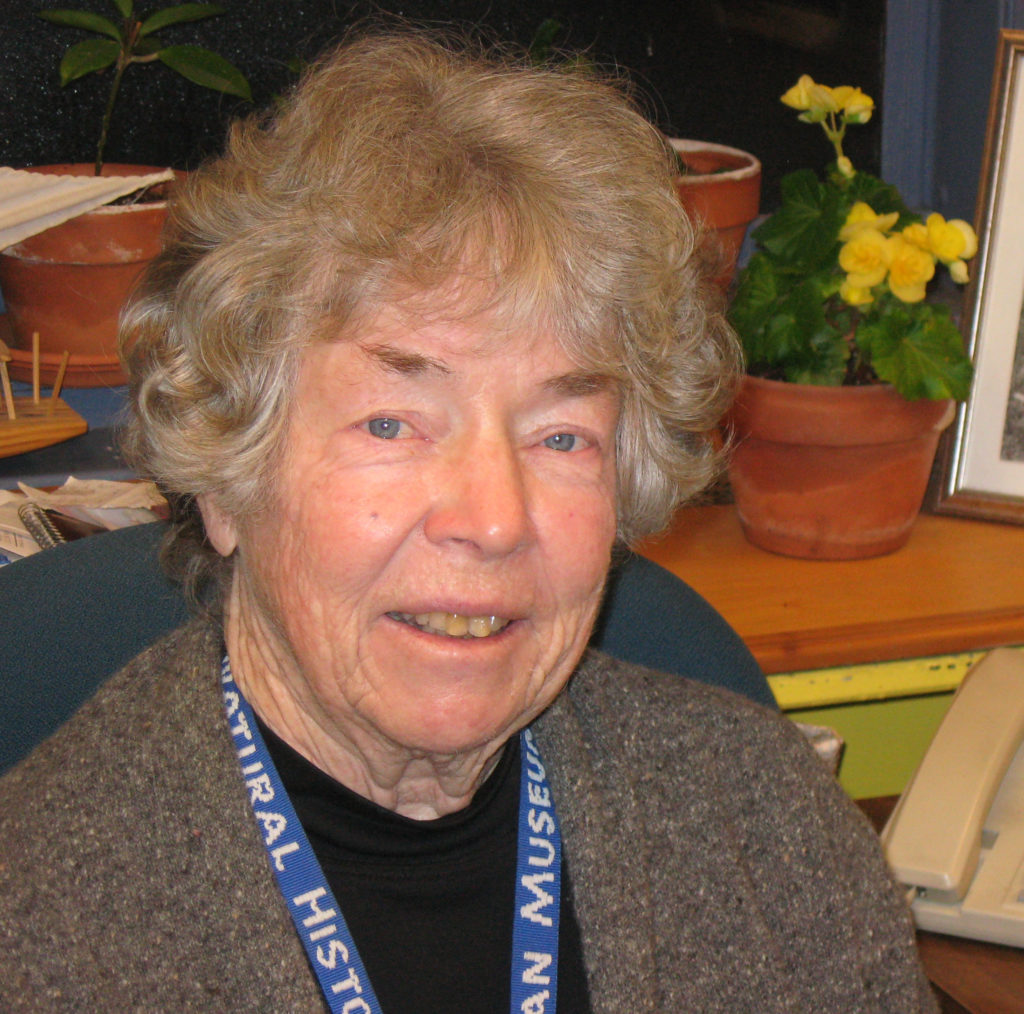BCR 108: Helen Hays, Great Gull Island
Today’s show is one of BirdCallsRadio’s featured series called “For The Record, Legacy Interviews™” with this series 6th guest Helen Hays in New York City.
Our distinguished guest today is Helen Hays of the American Museum of Natural History, New York City. What can you say about a woman who lives half the year in an abandoned fort in the middle of Long Island Sound and has voluntarily elected to do so every year for fifty years. No, she is not serving time, she has chosen to be at this place, Great Gull Island off the Eastern tip of Long Island between Plum Island and Fishers Island, to oversee what has become her life’s work. The other half of the year, she lives in Manhattan, does office work and writes papers.
Helen Hays has directed, since 1969, the work on the ongoing Tern Research project on Great Gull Island designed to study and preserve this major colony for the American Museum of Natural History in New York City, which gained control of the Island in 1949. Today the Great Gull Island tern colony attracts in the summer 9,500 pairs of Common Terns and 1,300 pair of Federally Endangered Roseate Terns making this the largest such colony of Roseate’s in the Western Hemisphere.
Before the terns arrive in the spring preservation efforts are undertaken to ensure nesting success and when the terns arrive en masse the team efforts turn to pure research. Helen is the driving force for this ever-changing band of ornithologists and volunteers from around the world, who do the work, cheerfully, under marginal conditions. The research efforts under Helen have expanded to Brazil, Argentina, Puerto Rico and the Azores and now involve modern electronic monitoring to track migration routes. As everyone who works with her knows, she is a very special person and she has helped nurture, through her labors and perseverance, one of the great ornithological preservation efforts and data banks of our times. Helen is on the staff of the American Museum of Natural History, and it is do to their continued support that this work was possible.
Show Notes:
- Early years and how you became interested in the world of natural history.
- Tell us about the two tern species found on Great Gull; it is for them that all these efforts have been expended.
- Please give us the background on acquisition of Great Gull Island be the American Museum Natural History and the early re-colonization by terns.
- When you started at Great Gull what were the conditions like and how many people where they’re in the early days.
- Tell us about the data that is collected and the path the data travels to the database.
- The data gleaned from years of tern research is hard science in its rawest form, what are some of the most interesting findings that have come from this work?
- Describe a typical high season day on Great Gull Island.
- Great Gull is not the only tern colony in the North East, what are some of the other important colonies and do they have research working on them?
- Tell us about Esteban Bremer from the Fundacion Vida Silvestre Argentina and the connection to Great Gull.
- There are also connections to Brazil and the Azores particularly related to Roseate Terns.
- What advice would you give to young people interested in a career in the natural sciences?
Mentioned In Episode:
BCR 140 Helen Hays, Great Gull Island 50th Anniversery
BirdCallsRadio additional Information:
To Support BirdCalllsRadio & Podcast DONATE NOW
BirdCallsRadio ON THE GO! Subscribe & listen to our podcast for Mac users at Apple Podcasts, PC users at Stitcher, on any device automatically so you won’t miss an episode; and please leave a rating or a review if you would be so are so kind! We appreciate it!
Subscribe to our FREE Newsletter and stay up to date on all our episodes and exclusive offers by clicking here on BirdCallsRadio and scrolling to the bottom of the front page to sign up.

